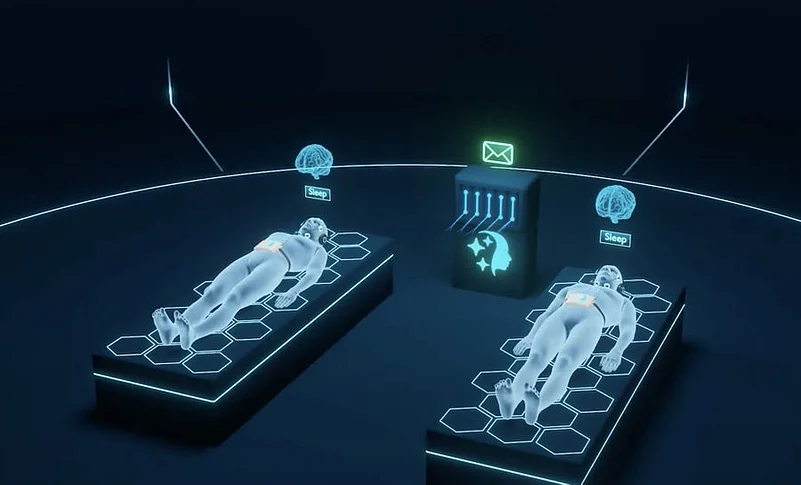A California-based startup, REMspace, has announced a major breakthrough in sleep research, claiming that two people communicated with each other during lucid dreams. This development could bring us closer to what once seemed like science fiction, reminiscent of Christopher Nolan’s movie Inception. However, the findings have not yet been scientifically validated.
Lucid dreaming happens when someone realises they are dreaming and can control their actions. This usually takes place during rapid eye movement (REM) sleep, the stage when most dreams occur. While lucid dreaming itself has been a subject of fascination for many, REMspace claims to have taken it a step further by enabling "dream-to-dream" communication.
In their experiment, two participants were induced into lucid dreams using a specialised setup developed by REMspace. The exact equipment remains undisclosed, but it involved monitoring brain waves and using sensors to detect when participants entered a lucid state. When one participant reached this state, a simple message was sent to them through earbuds, recorded in a special language created by the researchers. The message was repeated by the participant within their dream and stored.
Later, the second participant entered a lucid dream and received the stored message from the first dreamer. They repeated it after waking up, and the experiment was successfully conducted with another pair of participants as well.
The technology was developed by Michael Raduga, REMspace's CEO and founder, who is known for his unconventional approaches. Raduga has previously experimented with brain implants in an attempt to control his own dreams. He now envisions broader uses for this dream communication technology, suggesting it could be helpful in mental health treatment or skills training, allowing people to process emotions or practice tasks within their dreams.
Despite the buzz around this achievement, REMspace's work has not yet been through scientific peer review. Still, Raduga is optimistic, predicting that dream communication could be as revolutionary as artificial intelligence. If successful, this technology might open up new possibilities for both sleep science and communication.


























